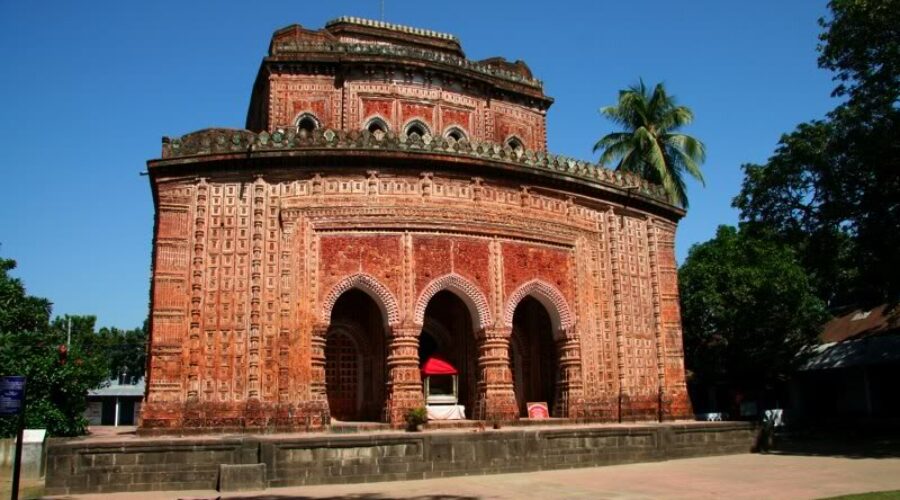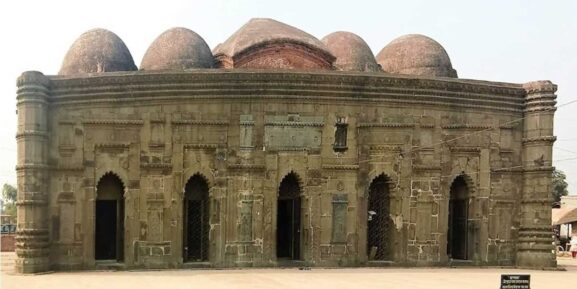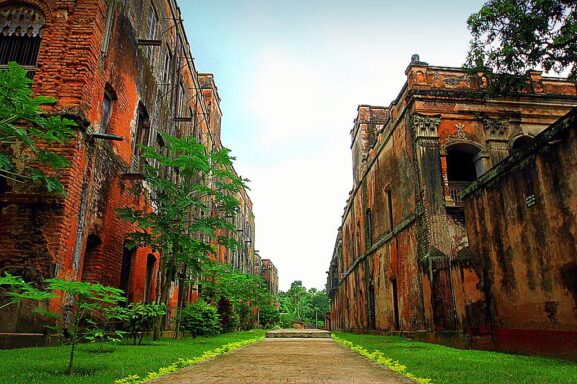Kantaji Temple: A late-medieval Hindu Temple
Kantaji Temple, one of the country’s most spectacular temples, is located 287 kilometers from the capital city, Dhaka.
The 18th-century temple is situated around 12 kilometers north of Dinajpur town. One of the most spectacular temples of the late medieval era. The temple is dedicated to the Hindu god Kanta, often known as Krishna. It represents the devotional love between God Krishna and his wife Rukmini.
The temple is one of Bangladesh’s finest examples of terracotta art. With art and ornamentation covering the whole surface of the temple, it has risen to prominence as an amazing monument. The temple had nine spires, or “Nava-Ratna.” The 1897 earthquake destroyed the nine spires.
The Kantaji temple is a true time capsule that reveals the history and commitment of those who lived more than a century ago. The UN designated the temple as a world heritage site due to its antiquity and fascinating work of art.
The design of the temple
Kantaji temple is designed in a stunning pyramidal form with receding terraces. The nine decorative spikes were made to appear like ratnas (jewels) on each side of the floor and in the center. The temple has arched entrances on all four sides, allowing worshipers to enter from any direction.
A galvanized tin roof covers the temple’s rectangular court. On the bottom floor, there is a passageway around the prayer room. On either side, two beautifully carved brick pillars divide the three multi-cusped arched openings. Narrow stairs go up the corridor to the second level, from which you may access the third level.
Terracotta art at its finest.

The entire temple is three floors tall. Magnificent floral and figurative artwork fills the temple. The Mahabharata, the Ramayan, and Krishna’s various adventures are the subjects of the painting. The images depict present social settings of the era as well as aristocratic favorite moments. The magnificent masterpieces clearly retain Bengal’s finest period of mural arts. Kantaji Mandir, unlike other south Indian terracotta temples, does not include any sensual scenes. The temple’s modern design differs from that of Buddhist temples from the 7th and 8th centuries. The entire setting is adorned in a sophisticated and mature manner. Unlike other temples where the plaques are inconsistent, the Kantaji Mandir has a coordinated composition that pulls together an extraordinary composition to bring together every in a lovely rhythm.
Restoration of the temple

The temple’s construction started in 1722 CE, under the rule of Maharaja Prannath of Dinajpur. After nearly 30 years, his adopted son Maharaja Ramnath finished the structure and fulfilled his father’s ambition in 1752 CE. After the earthquake, Maharaja Girijanath Bahadur reconstructed the temple in the early twentieth century but was unable to rebuild the nine spires. There is some confusion among scholars about when the temple was built. But a Sanskrit stone inscription that records the time of the construction resolves this issue.
How to get there
From Dhaka, you may take a bus to Dinajpur. When you arrive, take a bus to Thakurgaon and inquire about Kantaji Temple. The bus will transport you to the nearest bus station, from which you must take a three-wheeler to your location.
Kantaji temple location, click here.
you can also read about another architectural beauty of Bangladesh, the Puthia Temple Complex.



